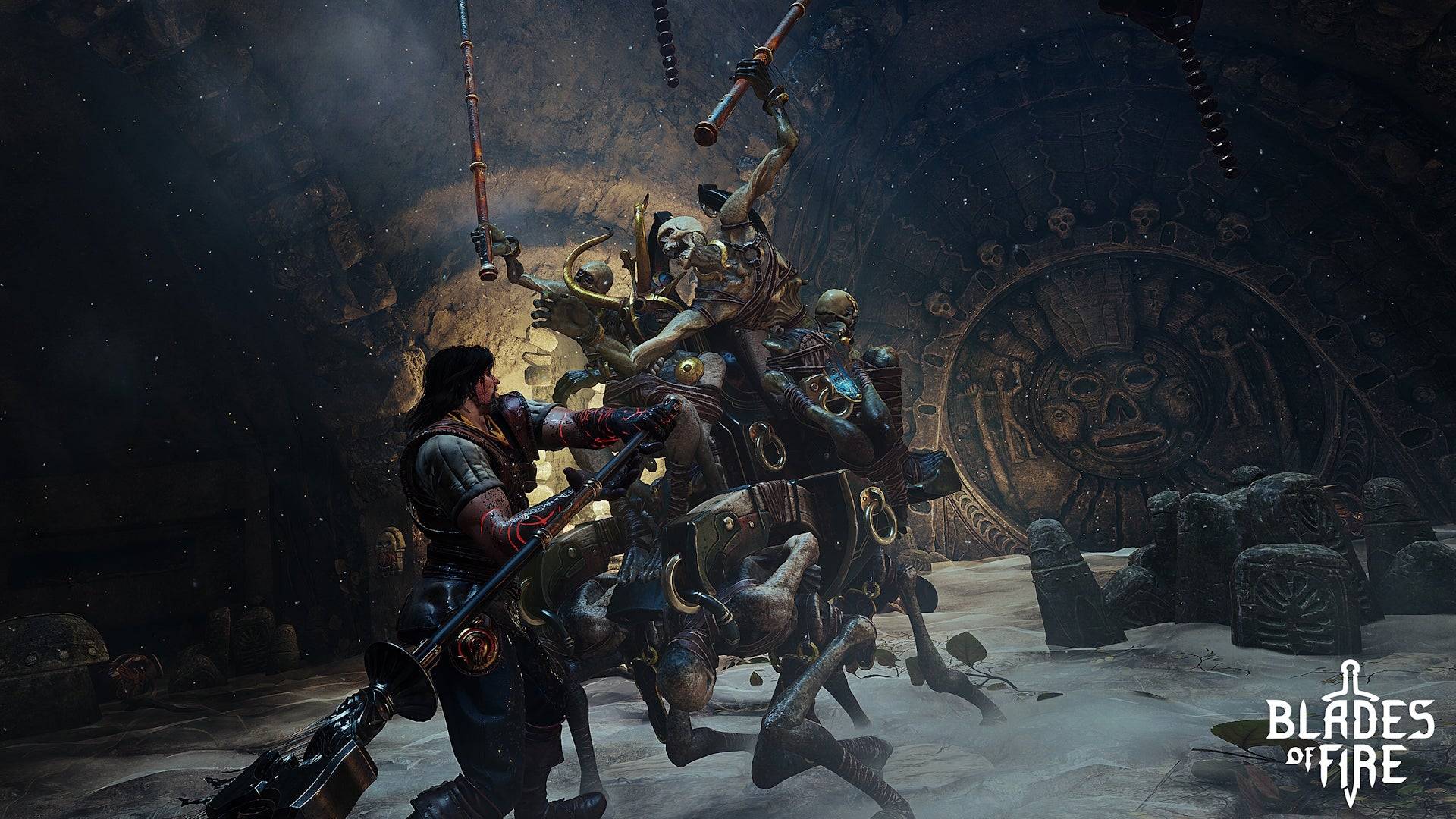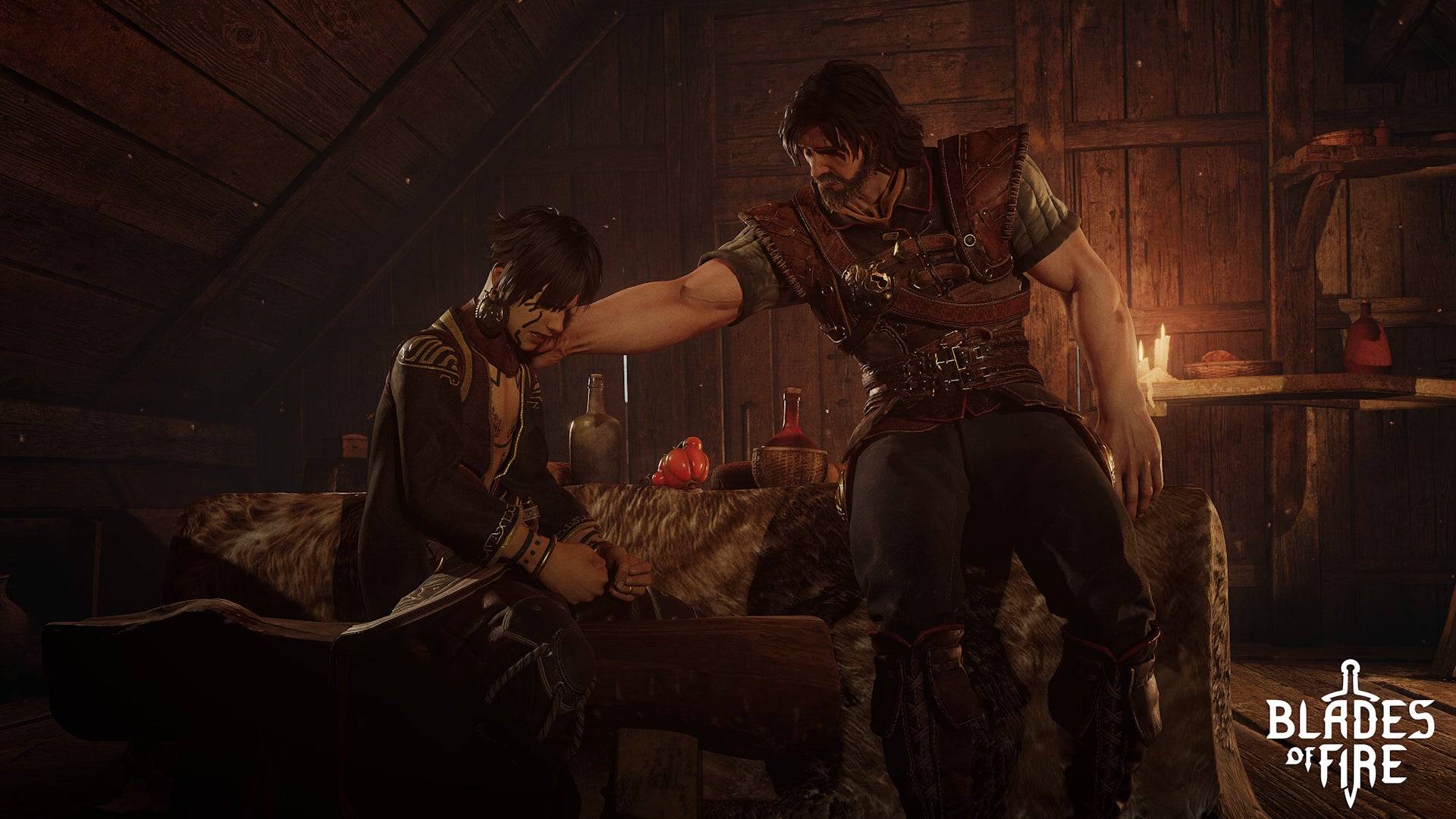When I sat down to play developer MercurySteam's latest project, Blades of Fire, I initially anticipated a nostalgic return to the studio's Castlevania: Lords of Shadow games, infused with the contemporary flair of God of War. However, within an hour, the game's essence shifted, evoking the feel of a Soulslike experience, where the focus was primarily on weapon stats rather than traditional RPG character development. By the conclusion of my three-hour hands-on session, I recognized that Blades of Fire deftly straddles both familiar and innovative territories, crafting a unique experience within the action-adventure genre.
At first glance, Blades of Fire might be mistaken for a clone of Sony Santa Monica's God of War, with its dark fantasy setting, impactful combat, and a third-person camera that closely follows the action. The parallels are evident: during the demo, I navigated a labyrinthine map filled with treasure chests, aided by a youthful companion who assisted in puzzle-solving. Together, we sought out a woman of the wilds residing in a house atop a giant creature. The game's familiarity is enhanced by elements borrowed from FromSoftware's catalog, such as anvil-shaped checkpoints that restore health potions and respawn enemies. Yet, this familiarity is tempered by a distinctive 1980s fantasy aesthetic. The world evokes the era of Conan the Barbarian, with its muscular warriors and bizarre enemies reminiscent of Jim Henson's Labyrinth, such as orangutan-like creatures bouncing on bamboo pogo sticks. The narrative, too, carries a retro charm: an evil queen has petrified the world's steel, and it's up to Aran de Lira, a blacksmith demigod, to defeat her and restore metal to its former glory. While these elements are charming, the story, characters, and writing may not prove as compelling as hoped, reminiscent of the often-overlooked narratives from the Xbox 360 era.
 Blades of Fire features some deeply strange enemies that feel like dark cousins of Labyrinth's puppets. | Image credit: MercurySteam / 505 Games
Blades of Fire features some deeply strange enemies that feel like dark cousins of Labyrinth's puppets. | Image credit: MercurySteam / 505 Games
The game truly shines in its mechanical execution. Its combat system, rooted in directional attacks, leverages every face button on the controller. On a PlayStation pad, triangle targets the head, cross aims for the torso, while square and circle swipe left and right. Mastery of this system involves reading enemy stances to break through defenses effectively. For example, a soldier guarding their face can be defeated by attacking their exposed abdomen. The visceral feedback, with blood erupting from inflicted wounds, adds a satisfying layer to the combat.
The demo's first major boss, a troll, exemplified the system's potential. Its second health bar could only be depleted after dismembering the beast, with the limb removed determined by the angle of attack. Striking from the right could detach its left arm, disarming it, and even severing its face to blind it temporarily. These mechanics add depth and strategy to encounters.
Your weapons in Blades of Fire require constant attention, a core element of the game. They dull with use, gradually decreasing damage output, necessitating sharpening stones or stance changes, as the edge and tip wear independently. This system encourages strategic weapon management, akin to Monster Hunter's mid-fight sharpening. However, weapons have a durability meter that depletes over time, requiring repair at anvil checkpoints or melting down for crafting new weapons.
The forging system is Blades of Fire's most innovative feature. Instead of finding new weapons, you craft them from scratch. Starting with a basic template, you can modify elements like the length of a spear's pole or the shape of its head, affecting stats and stamina requirements. The forging process itself is a minigame where you control the hammer's strikes to shape the metal according to an ideal curve. Overworking the steel weakens the weapon, so precision and efficiency are key, with star ratings determining repair limits.
 The forging minigame is a great idea that feels a little too obtuse. | Image credit: MercurySteam / 505 Games
The forging minigame is a great idea that feels a little too obtuse. | Image credit: MercurySteam / 505 Games
While I appreciate the concept of the forge and its skill-based approach, the minigame felt somewhat obtuse, with unclear connections between strikes and resulting metal shapes. I hope for improvements or a clearer tutorial before the game's release to enhance this unique feature.
MercurySteam's vision extends beyond the demo, aiming for a deep connection between players and their crafted weapons over a 60-70 hour journey. As you discover new materials, you can reforge your weapons, enhancing their properties to meet evolving challenges. The death system further emphasizes this bond; upon defeat, you drop your weapon, which remains in the world, challenging you to retrieve it.
MercurySteam's nod to Dark Souls and its siblings is understandable, given FromSoftware's impact on action games and the studio's connection to Blade of Darkness, a precursor to the Souls series. Yet, Blades of Fire transcends these influences, crafting a distinct identity within the genre.
 Aran is joined by his young companion, Adso, who can help solve puzzles and comment on the world's lore. | Image credit: MercurySteam / 505 Games
Aran is joined by his young companion, Adso, who can help solve puzzles and comment on the world's lore. | Image credit: MercurySteam / 505 Games
My time with Blades of Fire left me with mixed feelings. While the dark fantasy setting might struggle to sustain a lengthy adventure, and the repeated encounters with the same miniboss raise concerns about variety, the innovative weapon-crafting system and its impact on gameplay are undeniably intriguing. In an era where complex games like Elden Ring and Monster Hunter have captured mainstream attention, Blades of Fire has the potential to offer something fresh and fascinating to the action-adventure landscape.





![Chubby Story [v1.4.2] (Localizations)](https://images.737c.com/uploads/85/1719638042667f981a5e9f8.jpg)


